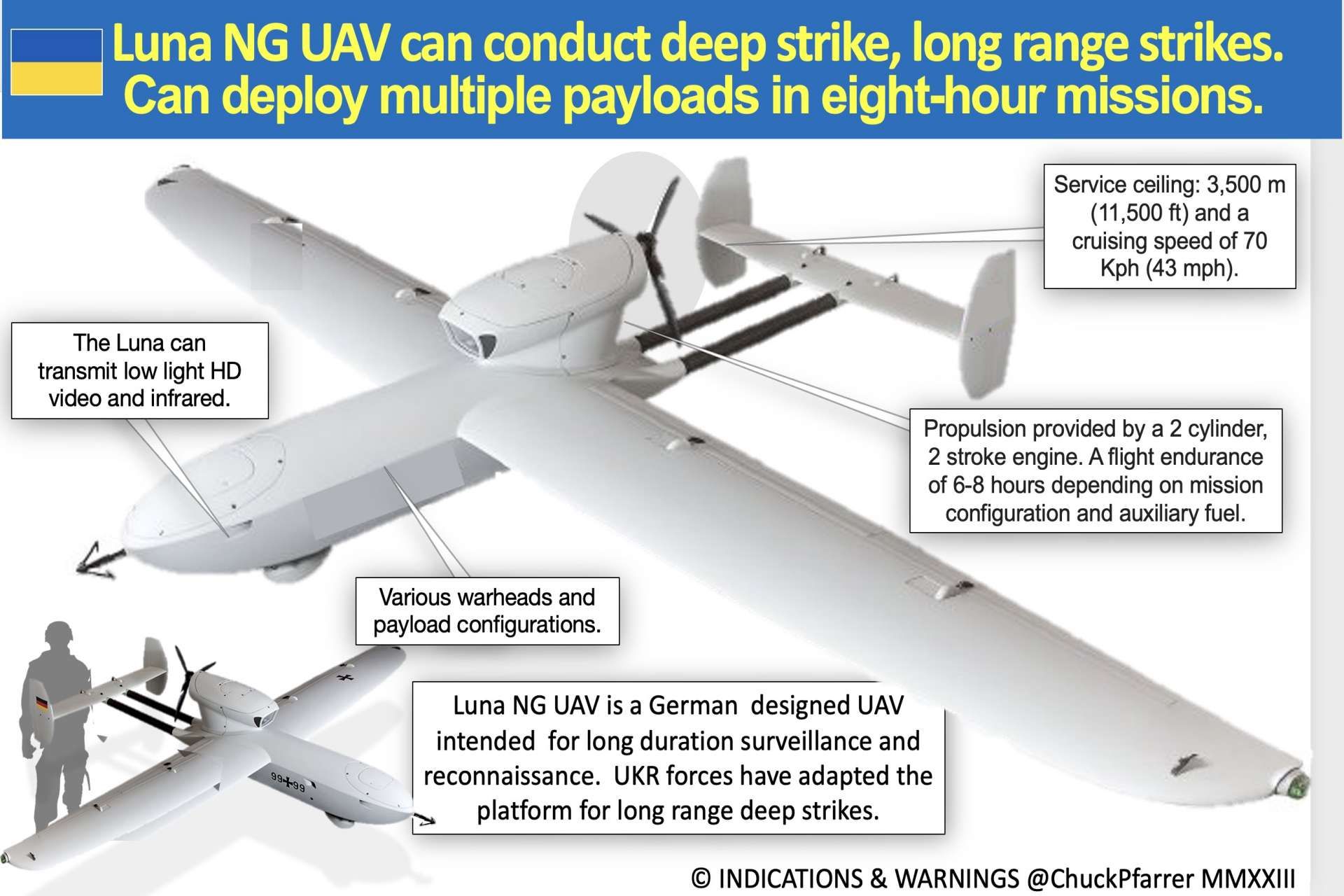Breaking News
Ukrainian Drone Strikes Russian Territory and an Oil Refinery.
A Ukrainian drone attack targeted an oil refinery in Tuapse, located in the Krasnodar region of Russia. According to reports from Russian Telegram channels, the attack aimed to disrupt vital energy infrastructure. This information was widely disseminated on July 22, 2024.
Follow Army Recognition on Google News at this link

The Luna NG is a sophisticated drone with a wingspan of 530 cm and a maximum takeoff weight of 110 kg. (Picture source: Russian social media)
The Russian Ministry of Defense quickly responded, announcing that "all drones were shot down" before causing significant damage. A video released by the ministry showcased the "successful work" of Russian air defense systems, highlighting their effectiveness in intercepting and neutralizing aerial threats. This video, intended to reassure the public and demonstrate Russian military prowess, did not have the intended effect as a drone can be seen hitting the refinery.
Chuck Pfarrer, a notable defense analyst and former Navy SEAL, shared information about the attack via his Twitter account, @ChuckPfarrer. He referenced a video posted by Anton Gerashchenko (@Gerashchenko_en), an advisor to the Ukrainian Ministry of Internal Affairs, which provides a closer look at the strike. According to Pfarrer, the drone used in this operation appears to be an adaptation of the long-range reconnaissance drone Luna NG, capable of sustaining flight for eight hours. This suggests an advancement in Ukrainian drone technology, enabling deeper and more precise strikes into Russian territory.
The Luna NG is a sophisticated drone with a wingspan of 530 cm and a maximum takeoff weight of 110 kg. Designed for long endurance, it can stay airborne for up to 12 hours depending on the payload. It is launched using a catapult, while landing can be executed by parachute or net with autonomous landing capability. The flight path of the Luna NG is programmed before departure, but can also be modified during the mission from the ground station.
A Luna NG/B system includes five unmanned aerial vehicles equipped with electro-optical and infrared sensors, two ground control stations, communication means integrated into protected functional containers, two telemetry antennas mounted on trailers, workshop equipment integrated into a protected container, as well as a set of spare parts. The standard configuration of such a system also includes two launch and landing devices, technical documentation, and necessary training materials.
The Luna NG can reach speeds between 80 and 150 km/h and operate at a service ceiling above 18,000 feet (approximately 5,486 meters). Its range exceeds 150 km, making it a valuable tool for long-distance reconnaissance and surveillance missions. With its combination of long endurance, flight flexibility, and advanced surveillance capabilities, the Luna NG is particularly suited for sophisticated military and security missions.
Reactions to the attack are mixed. Pro-Russian channels emphasize the successful defense against the incursion, while Ukrainian sources highlight the ability to penetrate deep into enemy territory. The drone attack on the Tuapse oil refinery strikingly underscores the evolving nature of warfare. As technology advances, so do the methods of conflict.

Infographic of the Luna NG drone. ( Picture source: Chuck Pfarrer)


























